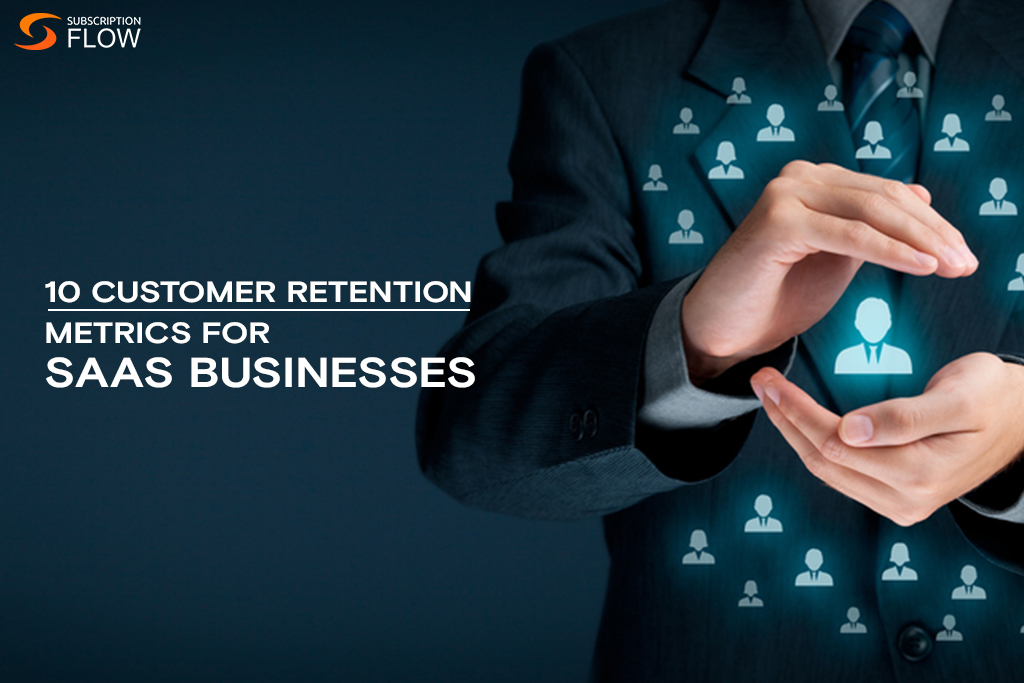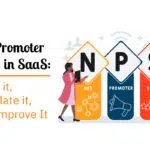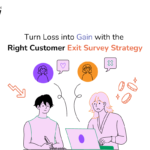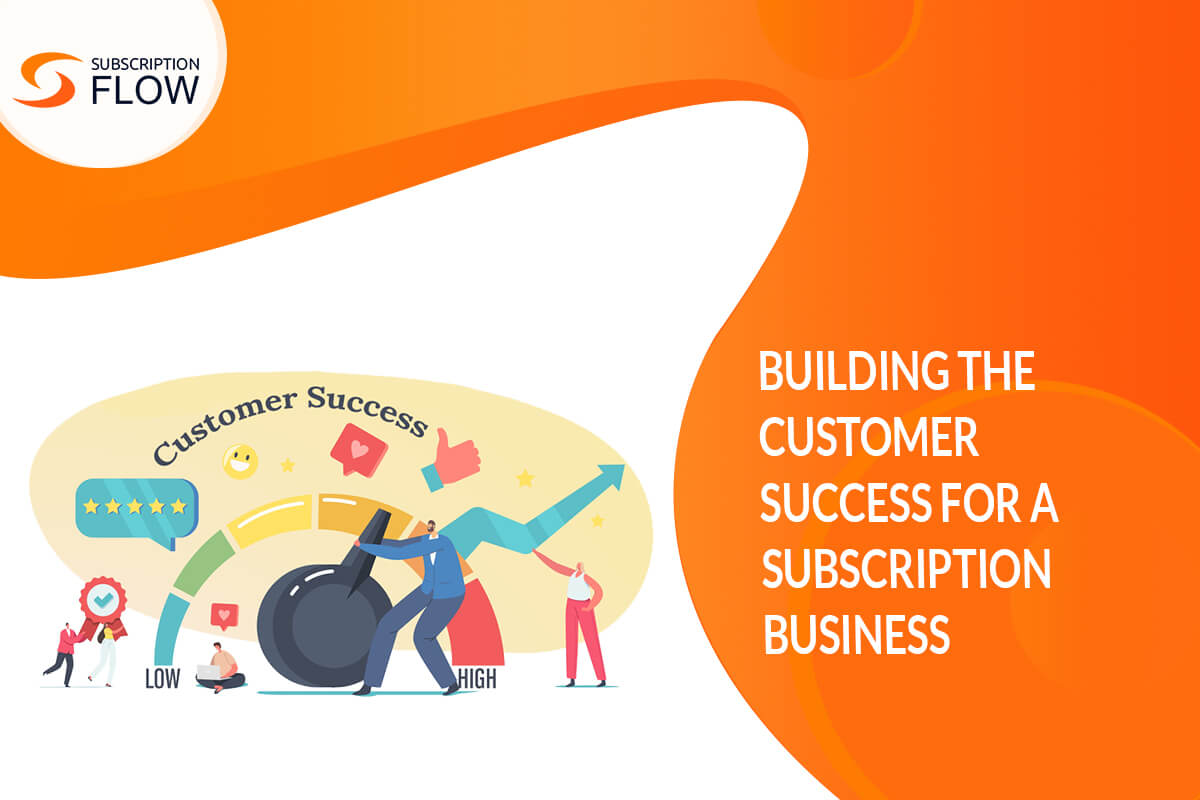
Important SaaS Customer Retention Metrics for Subscription Businesses
Compared to other business models, subscription-based businesses are perhaps the most complicated ones.
Apart from the hassle of processing recurring billing and countless payments, the idea of having continued and lasting subscriptions is integral.
That’s because you need every customer to provide you with the highest possible lifetime value. And for that, you need your users to stay subscribed for as long as possible.
Customer retention is key to ensuring your subscription business stays afloat. Since recurring revenue is the optimal goal for these organizations, coming up with efficient B2B SaaS customer retention strategies is the priority.
There are several things a business can do in order to retain its customers. Though it’s a stressful task, but keeping up with the market is vital for any business looking to keep its userbase.
That’s because regardless of how well-established you are, there are always competitors in the market.
Your competition will make sure to offer something new if not improved to convert your target audience.
While it’s crucial that SaaS companies provide the most remarkable customer experience possible, you also need to be able to measure the success rate of your struggles.
That is where customer retention metrics come in. These are KPIs that allow subscription businesses to measure their performance in terms of retaining customers.
Read More: The Definitive Guide to Improving Customer Retention for Your Business
SaaS Customer Retention Metrics for Subscription Businesses
1. Customer Retention Rate
First in the list of customer retention metrics for subscription businesses is customer retention rate.
As the name shows, this is the metric that shows you the rate at which you’re keeping and losing your customers.
To measure customer retention rates, you need to pick a timeline. This timeline could be any period ranging from a month to a whole year.
For any startup or SME, a good customer retention rate can be of 35% or above.
Here’s how you can calculate your Customer Retention Rate (CRR):
2. Renewal Rate
The renewal rate is the rate at which your subscribers whose plans have reached their term’s end are choosing to resubscribe or renew their packages.
It’s important for SaaS businesses to convince their customers to remain subscribed in order to increase their customer lifetime value.
After all, every business wants the maximum amount of recurring revenue.
And since you’ve spent a sum on getting these customers in the first place, it’s only justified that you make the most of the ones that come on board.
The renewal rate is measured by dividing the total number of customers that renewed their subscriptions by the total number of subscriptions that could’ve been renewed.
3. Churn Rate
Churn rate is defined as the rate at which you lose subscribers. Churn is always bad for business and for subscription businesses, there can’t be anything worse.
You can’t have a lot of customers churning, especially if you have a high customer acquisition cost.
In fact, in order to grow profitable, a business needs to have the lowest churn rate and a low customer acquisition cost as well.
To calculate your churn rate, pick a time period, like a month or a year. It’s best that startups and SMEs calculate their churn rates on a monthly basis.
However, once your customer base grows into the hundreds or thousands, it’d be wise to calculate it on a yearly basis. SubscriptionFlow churn reduction software can help you save customers before they churn 🙂
Read More: Combating Churn for a SaaS—Use Content to Attract, Educate, Convert and Retain Customer
4. Revenue Churn Rate
Revenue churn rate is defined as the rate at which your revenue from your existing customers declines due to downgrades or cancellations of subscriptions.
This metric is different from churn rate of a subscriber because you can lose revenue even without losing a customer.
For example, if a customer who has subscribed to your premium plan decides to downgrade their subscription to a standard one, you’re losing revenue without losing the customer.
Similarly, if your customer decides to unsubscribe from a plan and stays for another, this is also lost revenue.
To calculate your revenue churn rate, you need to identify your monthly recurring revenue (MRR) at the start of the month, at the end of the month and your MRR resulting from upgrades during the month.
Monthly Recurring Revenue at the Start of the Month = MRRS
Monthly Recurring Revenue at the End of the Month = MRRE
Monthly Recurring Revenue Due to Upgrades = MRRU
5. Customer Lifetime Value
Customer lifetime value is perhaps the most important metric for a subscription business when it comes to customer retention.
As discussed above, the longer a customer stays subscribed to your business, the more profit you’re going to get from them.
That is why it’s crucial that your customers stay on board for the longest possible time.
Every single customer that subscribes to your package will continue to be a source of recurring revenue as long as they stay connected.
For most businesses, a customer’s lifetime value easily surpasses the cost of acquisition spent on getting that customer on board.
After this period, you’re only profiting from the additional time they stay connected.
To calculate your customer lifetime value, you need to divide the average monthly recurring revenue you get from each user by the customer churn rate.
6. Existing Customer Revenue Growth Rate
As the name shows, this is the rate of revenue growth that is expected from an existing customer as compared to new ones.
This is the revenue that is dependent upon the efforts of your customer success departments.
Almost all SaaS companies offer something more than their core product that all customers want. Once you have a customer reeled in for your basic packages, you need to get to work on trying to upsell and cross-sell your other products and services.
This ensures that you’re getting the maximum value from a customer for the lowest acquisition cost.
To calculate your existing customer revenue growth rate, you need to look at your existing customers and use the formula to see how well you’re performing.
Which is why during its calculation, you’re not allowed to use the monthly recurring revenue generated by new customers. Using only the figures generated by existing customers, calculate your monthly recurring revenues as follows:
MRRS = Monthly Recurring Revenue from Existing Customers at the Start of the Month
MRRE = Monthly Recurring Revenue from Existing Customers at the End of the Month
7. Average Revenue Per User
Average Revenue Per User is the metric that allows subscription businesses to measure the revenue they get from every customer they get on board.
The ARPU gives us the profit a business is making from each user after adding the revenue generated by their subscription packages, upgrades and add-ons combined.
Given its obvious importance, it’s the go-to metric for most subscription businesses whenever they want to see how well they’re performing overall.
Compared to other metrics, this is the most direct representation of your organization’s performance as it provides a picture of the financial situation.
To get the average revenue per user, you just need to figure out the average revenue you’re getting in a month and divide it by the total number of subscribers you have.
8. Net Revenue Retention
Revenue retention refers to the revenue you’ve retained from your existing customers over a certain period of time.
This metric involves factoring in the customer subscriptions, upgrades, downgrades and even churns to develop a clear picture of the net revenue retained.
Your net revenue retention will tell you how much your business can grow if there’s supposedly no new customer signing up.
To calculate your net revenue retention, you need to figure out the following:
- Starting monthly recurring revenue (MRRS)
- Contraction monthly recurring revenue (MRRC)
- Churn monthly recurring revenue (CMRR)
- Expansion monthly recurring revenue (EMRR)
9. Customer Acquisition Cost Payback Period
The cost a business spends in order to get the attention and convert a customer is known as customer acquisition cost.
The time it takes for a subscription business to get the money they spent on acquiring a customer back in the form of revenue is known as the payback period.
This includes the budget you allocate for advertisements and onboarding customer success journeys that finally get a customer signed up.
Your customer acquisition cost should be as low as possible because the higher the CAC, the longer time you’ll need the customer to stay subscribed in order to break even with it.
Your CAC payback period is directly linked with your CLV (Customer Lifetime Value) because if you spend $100 on getting a customer and they pay you $10 every month, it’ll take 10 months for you to break even with your CAC.
After that 10-month period, the CLV of your customer will determine how profitable you can be from just that one customer.
In order to calculate your customer acquisition cost, you need to figure out your gross margin percentage.
Once you have your GMP, you need the ARPA (Average Revenue Per Account) which is very similar to ARPU.
Your formula for calculating CAC becomes:
10. Net Promoter Score
Every subscription business needs customer feedback in order to understand the needs and demands of their users.
This is why the best practice is to keep conducting surveys and having your customers provide feedback in the form of reviews or questionnaires that can help you determine the next strategy to follow.
One of the purposes of conducting these surveys is to get your net promoter score.
Think of this as the score of your customers that are in support of your business and would recommend it to anyone around them.
However, it follows logically that not all your customers are going to be happy with what you’re providing and some of them will have a thing or two to say in the negative.
This is why it’s essential that you keep conducting timely surveys and have your customers provide feedback to work with.
Read More: Businesses Tightening the Reins on Post-COVID Measures for Customer Retention
You can conduct a survey and ask your users to rate your business or ask them questions directly, e.g., “Do you think you would renew your subscription or order something more from our business?”
Depending upon the answers you get, you can break down the numbers and segregate your audience into segments of customers who either:
- Support your business (Known as promoters)
- Don’t hold a grudge but don’t love it either (Known as neutrals)
- Hate the service and are almost ready to leave (Known as detractors)
Obviously, the most useful segment for your business are the promoters and to calculate your net promoter score, you just need to find the percentage of promoters and percentage of your detractors.
How to Get All SaaS Customer Retention Metrics?
You can either work with all the above-given formulae and start calculating all these stats for yourself.
Or you can go for a subscription management software like SubscriptionFlow and have it calculated them all for you.
If you’re a SaaS business looking to incorporate a recurring billing software that can help you manage your subscriptions and provide you with all SaaS customer retention metrics, contact us now!




















